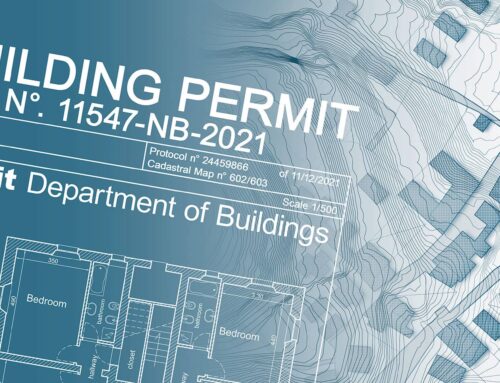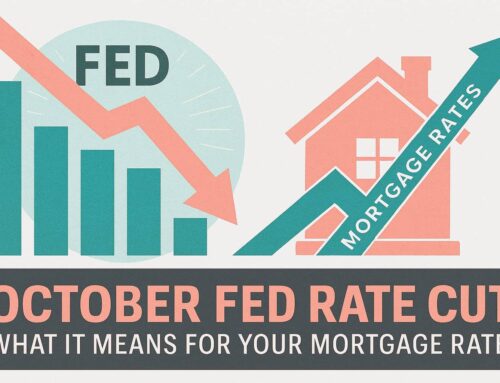
Colorado Home Prices Hit Record Highs Despite Sluggish Sales and Elevated Mortgage Rates
Colorado’s housing market challenges expectations with median home prices hitting $605,600, despite high mortgage rates and sluggish sales. The average price for homes is also slightly higher than last year, providing additional context to the market’s value trends. You’ll find a complex environment where cash-rich buyers and strategic investors are driving market dynamics. While first-time buyers face challenges, increasing inventory and a growing number of newly listed homes—reflected in the 18.9% inventory rise—mean more homes are currently listed, and total active listings are rising compared to the past year. Recent MLS data shows the median days homes stay on the market has increased, indicating a shift in market conditions. The number of homes sold this month is slightly higher than last year, with a notable percentage of Colorado homes sold closing above list price, highlighting ongoing demand. Over the past year, both home prices and inventory have been rising, though at a more moderate pace. The broader economy, including factors like mortgage rates and inflation, continues to influence the housing market’s stability and buyer behavior. While current mortgage rates remain elevated, the market is still adjusting from the period of low interest rates that previously fueled demand. Want to uncover the market’s hidden potential?
Key Takeaways
- Colorado’s median home prices reached $605,600 in 2025, representing a 2% year-over-year increase despite challenging market conditions.
- The market is shifting from a seller’s market to a more balanced or buyer’s market in some regions, as inventory levels and market trends evolve.
- Statewide housing inventory has expanded by 18.9%, providing more houses and options for potential buyers while maintaining upward price pressure.
- Many buyers are waiting on the sidelines due to high prices and mortgage rates, impacting overall demand and market activity.
- Limited housing inventory and high demand from equity-rich buyers continue to drive home prices upward, but the current environment is starting to favor buyers in certain areas.
- Cash purchases now represent 29% of transactions, with luxury market segments experiencing a robust 14% sales increase.
- Mortgage rates averaging between 6.74% and 6.81% have created significant entry barriers for first-time homebuyers, constraining traditional market dynamics.
Recap of Colorado’s Housing Market
Colorado’s housing market remains one of the most closely watched in the nation, with real estate professionals and homebuyers alike tracking every shift in home prices, inventory, and market trends. As of 2025, the state’s median home price hovers around $623,100, reflecting a modest increase from the previous year. This slight uptick signals a market that, while cooling from the frenzied pace of recent years, still commands strong interest and activity.
Housing inventory and supply levels are at the forefront of market discussions, as they directly influence both pricing and buyer opportunities. In Colorado Springs, a key city in the state’s real estate landscape, the average home price stands at $574,276, with a median home price of $497,475—figures that highlight the region’s ongoing appeal and competitive nature. With over 26,000 homes involved in recent sales, the data underscores a market in transition, where both buyers and sellers are keeping a close eye on evolving trends and available inventory. Whether you’re a seasoned investor or a first-time homebuyer, understanding these dynamics is essential for navigating Colorado’s ever-changing housing market.
Home Prices Continue to Rise
While Colorado’s housing market continues to navigate challenging territory, home prices have remarkably sustained their upward trajectory in 2025. You’ll find the statewide median price has climbed to $605,600, representing a modest 2% year-over-year increase. The average price is also slightly higher compared to last year and has shown steady growth over the past year. In the Denver metro area, prices have pushed even higher, reaching $609,925, with luxury segments experiencing the most robust growth. Both home prices and inventory are rising, reflecting increased market activity.
According to MLS data, the number of homes sold this month is slightly higher than last year, with 4,200 homes sold statewide compared to 4,100 sold during the same period last year. Currently, there are 7,800 homes listed, and total active listings have increased to 9,200, giving buyers more options. The median days homes stay on the market is now 28 days, up from 24 days last year, indicating a shift in market pace. Notably, 38% of Colorado sold homes closed above list price, highlighting ongoing competitiveness in the market.
Limited inventory, persistent demand from equity-rich buyers, and ongoing cash purchases are driving this resilient pricing trend. In spite of economic uncertainties, strategic investors and homeowners can still find opportunities in Colorado’s dynamic real estate environment.
Regional Market Variations
Colorado’s real estate market is far from uniform—regional differences play a significant role in shaping home prices, inventory, and buyer demand. In the Denver metro area, high demand and limited housing inventory continue to push average home prices above $600,000, with bidding wars still common in desirable neighborhoods. Meanwhile, Colorado Springs offers slightly more affordability, but strong job market growth and continued demand have kept prices elevated and inventory tight.
Mountain towns like Aspen, Vail, and Steamboat Springs remain in a league of their own, with luxury properties attracting out-of-state buyers and investors, often resulting in multiple offers and homes selling above list price. In contrast, rural areas and smaller cities are seeing increased inventory and more room for negotiation, giving buyers a better chance to find homes at or below the median price. These regional variations mean that market trends can differ dramatically from one city to the next, making it crucial for buyers and sellers to stay informed about local conditions and work closely with real estate professionals who understand the nuances of each area.
| Region | Price Trend | Buyer Activity | Inventory Change |
|---|---|---|---|
| Denver Metro | ↑ Slightly | Mixed | ↑ 34% YoY |
| Colorado Springs | ↑ Modestly | Slower | ↑ 30% YoY |
| Boulder | ↑ Strong | High-end only | ↑ Limited |
| Fort Collins | ↔ Stable | Moderate | ↑ 20% YoY |
| Mountain Towns | ↑ Selective | Cash-heavy | ↔ Limited |
Mortgage Rates and Affordability
The record-high home prices in Colorado have become increasingly intertwined with mortgage rate dynamics, creating a complex affordability environment for potential homebuyers. The broader economy, including factors like inflation and government policy, is influencing both mortgage rates and overall affordability. Currently, 30-year fixed mortgage rates are rising, averaging 6.74%–6.81%, which dramatically impacts monthly payments, pushing them over $2,250 for a median-priced home. This is a stark contrast to the recent period of low interest rates that previously boosted demand and made homeownership more accessible. First-time buyers face steep entry barriers, with many getting priced out or joining the group of buyers waiting for rates or prices to become more favorable. Curiously, existing homeowners with sub-4% mortgages are staying put, further constraining inventory. Despite these challenges, strategic buyers can still navigate the market by understanding these rate-driven affordability constraints and exploring creative financing options.
Buyer Behavior and Demand
Buyer behavior in Colorado’s housing market is evolving in response to current market conditions. With higher interest rates and record-high home prices, many buyers are taking a wait-and-see approach, hoping for price drops or more favorable mortgage rates before making a move. This pent-up demand is especially evident among first-time buyers, who face significant affordability challenges and are often priced out of the most competitive markets.
Despite these hurdles, continued demand from equity-rich buyers and those relocating from higher-priced states like California is keeping the market active, particularly in top cities and desirable neighborhoods. Multiple offers are still common for well-priced homes, but buyers now have more options as increased inventory provides greater selection. Real estate professionals report that buyers are becoming more strategic, focusing on properties with price growth potential and negotiating for concessions such as rate buydowns or closing cost assistance. As a result, the pace of sales has slowed, but the underlying demand remains strong, setting the stage for future market shifts once interest rates begin to ease.
Market Segmentation: “Haves and Have-Nots”
Colorado’s housing market in 2025 reveals a stark divide between economic classes, creating a setting where cash-rich buyers and luxury market participants thrive while first-time and mid-income homebuyers face unprecedented challenges. For cash buyers and those in the luxury segment, the current environment is a seller’s market, with limited inventory and rising house prices giving sellers the upper hand. In contrast, first-time buyers are struggling in what is decidedly not a buyer’s market, as high house prices and low supply make it difficult to secure a home.
|
Buyer Segment |
Market Performance |
|---|---|
| Cash Buyers | Strong Advantage (Seller’s Market) |
| Luxury Buyers | 14% Sales Increase (Seller’s Market) |
| First-time Buyers | Significant Barriers (Not a Buyer’s Market) |
With 29% of transactions being all-cash and homes above $1M seeing robust growth, you’re witnessing a market where wealth determines access to a house. The average first-time buyer is now 38, facing median prices 48% higher than five years ago. This segmentation isn’t just a trend—it’s a structural shift challenging traditional homeownership pathways. Real estate services play a crucial role in helping both buyers and sellers navigate these complex market conditions, offering expertise and support tailored to each segment.
Home Sellers and Home Buyers
For home sellers in Colorado, the current market presents both opportunities and challenges. While home values remain high and many properties are still selling at or above list price, sellers must be more strategic than in previous years. With more homes for sale and buyers becoming increasingly selective, pricing a property correctly is essential to attract buyers and avoid extended days on market. Real estate professionals recommend staging homes, offering incentives, and being open to negotiations to stand out in a crowded marketplace.
On the buyer side, those who are prepared and flexible have a better chance of success. Increased inventory means more options and less pressure to engage in bidding wars, but affordability continues to be a concern, especially for first-time buyers. Buyers who secure pre-approval, understand current market trends, and act quickly when the right property becomes available are best positioned to navigate the complexities of today’s housing market. Whether buying or selling, working with experienced real estate professionals and staying informed about local market conditions is key to making the most of current opportunities.
Inventory Trends and Builder Activity
In spite of economic headwinds, Colorado’s housing inventory is showing signs of resilience in 2025, with a statewide increase of 18.9% pushing total available homes listed to over 41,000, according to recent MLS data. The number of active listings has grown as well, with a notable uptick in newly listed homes adding to overall inventory and expanding buyer options. Builders are adapting by offering attractive incentives like rate buydowns and price cuts in key markets such as Castle Rock, Loveland, and Colorado Springs, contributing to the rising inventory levels. You’ll notice these strategies aim to stimulate demand, though single-family housing starts are still projected to fall 3.7% because of persistent economic challenges. The median days homes stay listed on the market has increased, reflecting a shift in market conditions and giving buyers more time to consider their options. In light of these obstacles, the gradual inventory expansion offers a glimmer of hope for potential homebuyers seeking more options in Colorado’s competitive real estate scenery.
Sales Volume Hits Multi-Decade Lows
In light of builder incentives and modest inventory growth, Colorado’s real estate market is experiencing a dramatic slowdown in sales volume that’s catching industry watchers’ attention. The number of homes sold this month is slightly higher than last year, but still well below the average of the past year, reflecting ongoing market challenges. Of the Colorado sold homes, only a small percentage closed above list price, indicating a shift from the competitive trends seen previously. You’ll notice existing home sales are tracking to match or fall below 2024’s record-low levels, signaling a profound market shift. Nationwide, sellers are increasingly choosing to wait out current conditions rather than reduce prices, leading to a 47% surge in delistings and a rising trend in homes being removed from the market. This trend reflects broader economic uncertainties, as the economy’s condition—including rising mortgage rates and inflation—continues to impact both sales volume and buyer confidence. Many buyers waiting on the sidelines are hesitant to purchase due to high home prices and economic instability. In spite of challenging conditions, the market remains dynamic, with strategic opportunities emerging for patient, well-prepared buyers.
Market Forecast and Predictions
Looking ahead, Colorado’s housing market is expected to remain dynamic, with several factors influencing future trends. While higher interest rates set by the Federal Reserve are likely to keep affordability in check, many experts predict that home prices will stabilize rather than decline significantly, thanks to continued demand and limited new construction. Inventory is expected to gradually increase, giving buyers more room to negotiate and potentially leading to a more balanced market over the next year.
Real estate professionals anticipate that as mortgage rates eventually ease, pent-up demand from buyers who have been waiting on the sidelines could drive a new wave of activity, especially in top cities like Denver and Colorado Springs. However, affordability will remain a key concern, and price growth is likely to be more moderate compared to the rapid increases of recent years. Sellers who price their homes competitively and buyers who are well-prepared will be best positioned to succeed in the evolving market. Keeping a close eye on market trends, interest rates, and local inventory will be essential for anyone looking to buy or sell property in Colorado in the coming months.
Conclusion
Colorado’s real estate scene is full of contradictions—home prices are soaring to record highs, yet buyer activity is near historic lows. Elevated mortgage rates, affordability hurdles, and uneven demand are reshaping the market. Cash buyers and luxury segments are thriving, while first-time and mid-income buyers face steep competition.
But here’s the truth: opportunity still exists for those who plan smart and act strategically. With the right guidance, financial prep, and market insight, your path to homeownership is still within reach.
The Storck Team is here to help you navigate the highs, lows, and everything in between. Whether you’re buying, selling, or just exploring your options, we’ll help you make informed decisions that move you forward. Let’s turn uncertainty into advantage—reach out today and let’s build your next chapter together.







